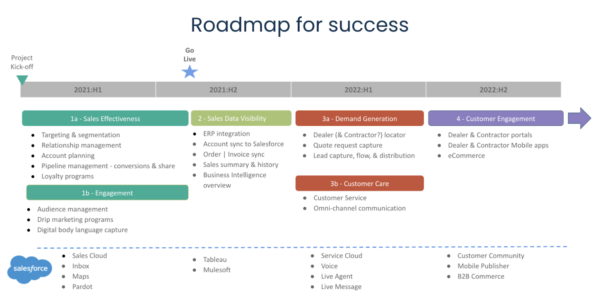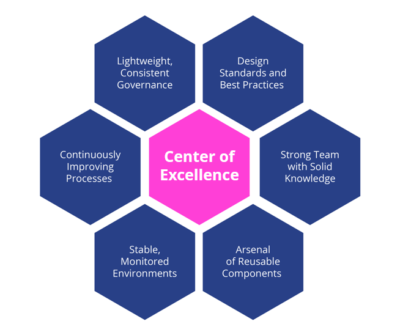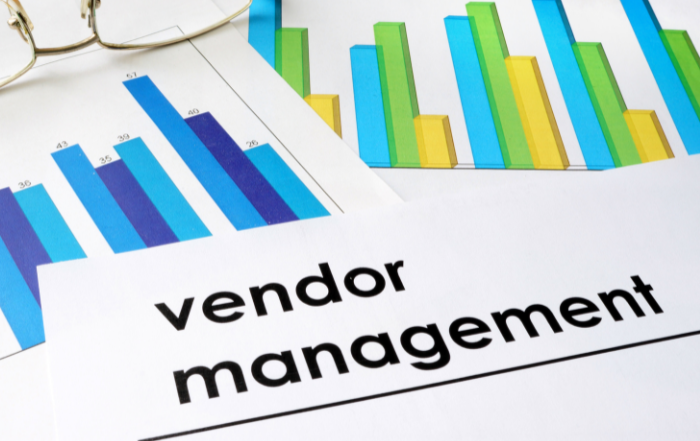The Complete Business Integration Roadmap for Salesforce
Investing in Salesforce is a transformative journey for any business; however, the course of that journey varies for every business. If you want to maximize your Salesforce ROI, you’ll need to devise a strategy that will sync the platform with your existing business processes. This strategy or business integration roadmap will guide you on your journey and, if executed properly, lead your business to the destination you have envisioned for it.
What is a Salesforce Business Integration Roadmap?
Before defining a business integration roadmap, it is essential to lead with an understanding that the development of a business integration roadmap is a joint effort by leaders across multiple departments. A Salesforce business integration roadmap is a shared strategy that helps your business leaders to understand the current obstacles the business faces and how Salesforce can address those obstacles and optimize your business.
This strategy is a centralized plan of action that analyzes and optimizes your entire business flow to align with the Salesforce platform. Consider it a GPS for the direction of your business operations. When new technology and challenges arise, your roadmap will guide your personnel, allowing them to adapt and evolve.
What Types of Businesses Need a Roadmap?
Whether you plan to utilize Salesforce as a CRM or as a tool to overhaul other business areas, you’ll need a business integration roadmap. Both small businesses and large enterprises can benefit from a roadmap. Business integration roadmaps will facilitate the growth of small businesses by scaling their systems during growth phases. For more established businesses, roadmaps are critical in dismantling data silos, bridging the gap between disconnected systems, and providing insight into system integration strategy.

How a Salesforce Roadmap Helps Business Integration
Anytime your business implements a new application or service, chances are that multiple departments are using it. Different personnel in various departments will have unique needs and calculations for how they will interface with that application. With a Salesforce business integration roadmap, your department leads will have a tool to guide their individual business processes and personnel under one roof. There are many benefits to gain from Salesforce roadmaps:
- Your organization can align its business goals with Salesforce features
- They help Salesforce leverage new features
- Roadmaps can facilitate digital transformation in the future
- Alert different departments about skill acquisition
Critical Considerations
Before devising your business integration roadmap, leadership should ask critical questions about their business. The answers to these questions shape your roadmap strategy and serve as “North Stars” should you find yourself overwhelmed or confused about how to integrate the Salesforce roadmap into your business operations.
- Define your strategy — Does my business strategy consider the impact of digital transformation? Does my technology roadmap integrate with my business strategy?
- Clarify your vision — What are the long-term goals for my business? Is my roadmap versatile enough to help my business as it is now and in the future?
- Consider your resources — Can my organization handle changes in the workload created by my roadmap? Does my business have the correct expertise in-house to implement these changes? Does my organization require a third-party consultant?
- Set your priorities — How will my business’s costs, effort, and infrastructure be affected by integrating Salesforce into my business?
- Determine oversight evaluation — Have I defined roles and their responsibilities? Are they clear? How will we stay on track?
How to Create a Business Integration Roadmap
After you’ve asked yourself key questions and answered them, you are ready to embark on a journey of creating your Salesforce roadmap. Remember that you are embarking on a journey, which means your roadmap may change due to any of the three updates that Salesforce releases annually. Additionally, your business integration roadmap may change as technology continues to evolve.
1. Identify and Analyze Your Business Goals
The first step is to consider where your company currently is without Salesforce. Identify the obstacles your business faces and identify their root causes. Next, you should identify the objectives that Salesforce can fulfill. By following these steps, you’ll better understand the needs of each department and what expectations to set from Salesforce.
2. Compare KPIs and Objectives
In this step, you’ll need to define how success is measured for each objective. By doing so, you’ll be able to quantify the level of success your company has after implementing Salesforce. The KPIs used to measure the effect of Salesforce implementation include data quality, length of the sales cycle, user adoption rate, and process compliance. The whole point of Salesforce implementation is to help you arrive at your business goals, and defining KPIs for each metric will help your business accomplish this.
3. Define a Structure for Salesforce Management
A Salesforce management structure will keep your business on track about how to facilitate Salesforce implementation across every facet of the business. A management structure makes it easier to plan and understand how Salesforce will be arranged to oversee implemented changes. It’s always best to set the idea of governance from the beginning stage.
The ideal management structure would be a Center of Excellence (CoE). A committee of key stakeholders in different disciplines within the business that share the same resources. This committee can manage communication in the event of change. The CoE will prioritize and vet changes to verify that they are consistently implemented throughout the business.

4. Consistently Review Your Roadmap
Your Salesforce roadmap is a living, breathing strategy. It will need to be adjusted and refined over time. A best practice would be to review your business integration roadmap every quarter. Your business leadership should always be up to speed on upgrades and advancements in technology by conferring with your Salesforce consultant.
Optimize Your Business Integration Roadmap with Rainmaker
Rainmaker provides many Salesforce-managed services that can help your business develop a roadmap and stay on the course to success.
Contact us today to explore how we can help your business integrate effectively with Salesforce.






